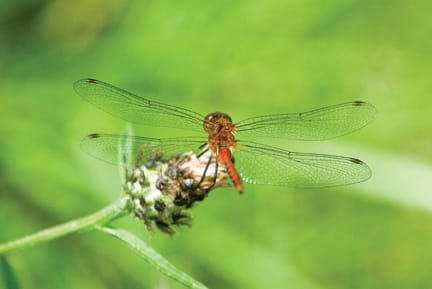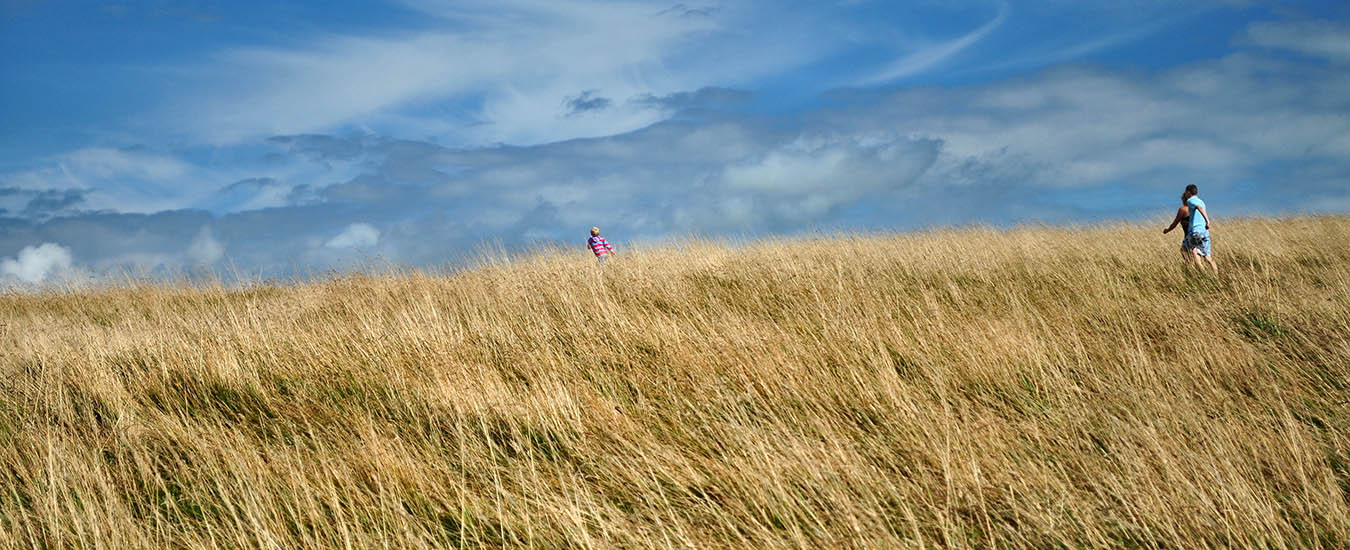Amherst Point Migratory Bird Sanctuary hums with activity, the reeds whisper and sway.
I'm gliding quietly in a canoe through the night-cooled water and pre-dawn mist. Surrounded by a lush tangle of cattails and rushes, I follow a narrow channel towards open water. The eastern sky begins to glow, an unfailing cue for the minstrels of the morning to begin their music. Ducks, red-winged blackbirds and songbirds begin celebrating daybreak in a rising chorus of quacks and trills. I can even hear a bittern belching out its bizarre galumph-galumph refrain in the distance. Soon the sun is shining and the whole marsh seems to hum with life. A new day dawns at Amherst Point.
Located near the geographic centre of the Maritimes, at the head of the Bay of Fundy, the Amherst Point Migratory Bird Sanctuary sits just southeast of the Tantramar Marsh and is part of the Chignecto National Wildlife Area. Six kilometres northeast is the town of Amherst, NS; approximately 15 kilometres northwest is Sackville, NB.

Recognizing the importance of the area as wildlife habitat, a fish and game club, with the agreement of the local landowners, established an informal sanctuary here in 1947. However, it didn't become an officially protected site until 1973, when the federal government purchased the land, placing it forever off-bounds to hunting.
The ecosystem here is a tapestry of freshwater marshes, bogs and small, deep lakes interspersed with fields and woods. Underlain by soil enriched by gypsum, limestone and marine silt, the area boasts the highest plant productivity of any wetland in Atlantic Canada.
Although natural wetlands are at the heart of the sanctuary, much of it is comprised of controlled water-level compounds similar to dyked-in ponds, built by Ducks Unlimited, in partnership with the Canadian Wildlife Service, in the early 1980s to increase habitat for waterfowl. Upland fields, mixed woodlands and old-growth forest provide a diversity of habitats for non-wetland species as well. Add to this its central location on the Atlantic migratory flyway, and you have a hotspot for bird life. Despite its relatively small size of 429 hectares, Amherst Point is a diverse environment.
It's also an ideal place for people who want to experience the best that nature has to offer in the Atlantic region. Relatively few people visit; if you're seeking solitude you will usually find it. Because no motorized vehicles are allowed, you can enjoy the unadulterated birdsong and other natural sounds-such as the whisper of the Tantramar breeze through cattails.
Easy paths wend their way through the sanctuary. The main trail, a 2.5-kilometre interpretive loop around Layton's Lake, takes you on the grand tour of Amherst Point's habitats as it skirts the lakeshore and marshes, and winds in and out of cool, shady woods. Launch a canoe in one of the sanctuary's large ponds for a quiet paddle through a carpet of water lilies.
More than 200 species of breeding and migrant birds have been documented here. Black duck, northern pintail, blue- and green-winged teals, northern shoveler, gadwall, redhead, ruddy duck, American coot, common moorhen, wood duck and ring-necked duck rear families here, as do the American bittern and the diminutive sora rail. In spring you'll hear the bizarre kuk-kuk-kow-kow-kow-cup-cup calls of courting pied-billed grebes.
Some species, such as Virginia rail, least bittern and the black tern, are extremely rare elsewhere in the region. Though the elegant snowy egret doesn't breed in the sanctuary, your chances of seing one here, although slim, are better than elsewhere in the region. Short-eared owls and northern harriers are often observed flying low in the open country, searching for unsuspecting rodents and small birds, while in the woods and fields the beguiling music of the hermit thrush, magnolia warbler, song sparrow and common yellowthroat rings out.
Less obvious, but no less intriguing, are the non-feathered residents: coyotes and deer, snowshoe hares and skunks, the ubiquitous muskrats. Frogs, painted turtles and small fish abound in hectares of warm, shallow water, while dragonflies and damselflies zoom overhead.
Amherst Point is defined as much by the birds and wildlife that inhabit it as by its landscape, providing sanctuary for poets and weary travellers, and anyone seeking soulful repose.
Scott Leslie has won two Atlantic Journalism Awards for excellence in photojournalism. Look for his new books, Woodland Birds of North America and Sea and Coastal Birds of North America, both published by Key Porter. For more information, go to scottleslie.com.
